10 Sensory Activities for Autism
Unlock the potential with 10 sensory activities for autism. Engage, stimulate, and support individuals on the spectrum.

Understanding Autism and Sensory Activities
To better understand the importance of sensory activities for autistic individuals, it is essential to have an overview of Autism Spectrum Disorder (ASD) and how sensory activities can positively impact their lives.
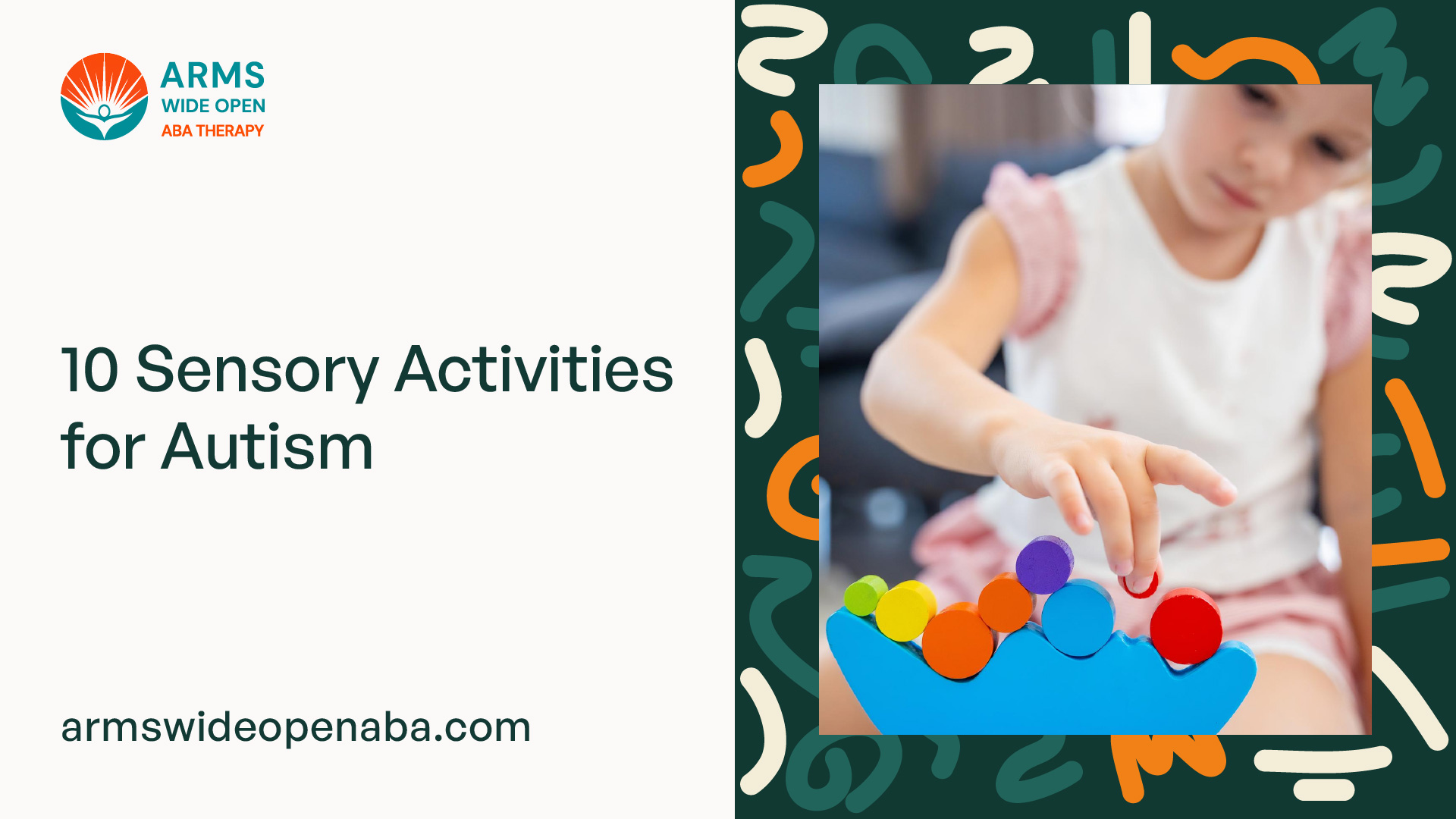
Overview of Autism Spectrum Disorder
Autism Spectrum Disorder is a neurodevelopmental disorder that affects an individual's social interaction, communication, and behavior. It is characterized by a range of symptoms that can vary in severity, including repetitive behaviors, difficulty with social interactions, and heightened sensitivity to sensory input.
Autistic individuals may experience sensory processing difficulties, where their brains have trouble filtering and organizing sensory information. This can result in sensory sensitivities or sensory-seeking behaviors. Sensory sensitivities can manifest in various ways, such as being overwhelmed by loud noises, avoiding certain textures, or feeling discomfort in bright lights.
Importance of Sensory Activities for Autistic Individuals
Sensory activities play a crucial role in supporting the sensory needs of individuals with autism. These activities provide opportunities for sensory exploration, regulation, and integration, helping to promote overall well-being and improve quality of life.
Engaging in sensory activities can help autistic individuals:
- Develop sensory processing skills: Sensory activities allow individuals to engage with different sensory stimuli, supporting the development and refinement of sensory processing abilities. This can aid in improving sensory regulation and reducing sensory sensitivities.
- Enhance focus and attention: Many sensory activities require focused engagement, which can help individuals with autism improve their attention span and concentration skills. By providing a structured and stimulating environment, sensory activities can promote better focus and engagement.
- Promote self-expression and communication: Sensory activities offer individuals with autism non-verbal avenues for self-expression and communication. Through sensory exploration, individuals can express their preferences, emotions, and sensations, fostering self-awareness and self-advocacy.
- Reduce anxiety and stress: Sensory activities provide a calming and soothing effect, helping individuals with autism manage anxiety and stress. Engaging in sensory play can serve as a relaxation technique, allowing individuals to self-regulate and find comfort in their environment.
By understanding the unique sensory needs of individuals with autism and providing appropriate sensory activities, we can create an inclusive and supportive environment that nurtures their development and well-being.
In the following sections, we will explore a variety of sensory activities that can be beneficial for autistic individuals, ranging from sensory bins and sensory rooms to creative sensory play and outdoor activities.
Sensory Activities for Autistic Individuals
Engaging in sensory activities can be highly beneficial for individuals with autism spectrum disorder (ASD). These activities provide opportunities for sensory exploration, self-regulation, and enhancing overall well-being. Here are three sensory activities that can be particularly helpful for autistic individuals:
1. Sensory Bins
Sensory bins are containers filled with various materials that offer tactile and visual stimulation. They allow individuals to explore different textures, shapes, and objects while engaging their senses. Sensory bins can be customized based on personal preferences and sensory needs. Here are some common materials used in sensory bins:

2. Sensory Bottles
Sensory bottles, also known as calm-down bottles or discovery bottles, are clear containers filled with a combination of liquid and appealing objects. These bottles offer visual stimulation and can be soothing for autistic individuals. Some popular sensory bottles include:

3. Sensory Rooms
Sensory rooms are dedicated spaces designed to cater to the sensory needs of autistic individuals. These rooms are equipped with a variety of sensory tools and materials to create a calming and stimulating environment. Some common features of sensory rooms include:

By incorporating sensory bins, sensory bottles, and sensory rooms into the daily routine of autistic individuals, caregivers and parents can provide opportunities for sensory exploration, relaxation, and self-regulation. It's important to tailor these activities to the individual's preferences and sensory needs, promoting a positive and enjoyable sensory experience.
More Engaging Sensory Activities
To provide a more diverse sensory experience for autistic individuals, there are several engaging activities that can be incorporated into their routines. These activities focus on texture exploration, sound-based activities, and visual stimulation, allowing individuals to further engage with their senses and explore the world around them.
4. Texture Exploration
Texture exploration activities involve providing a variety of materials with different textures for individuals to touch and explore. This sensory experience can be both calming and stimulating, depending on the individual's preferences.
Here are some examples of texture exploration activities:
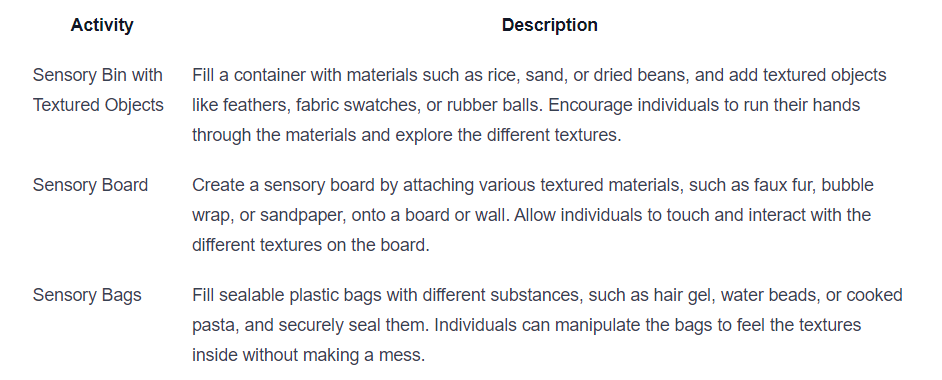
5. Sound-Based Activities
Sound-based activities can help individuals with autism engage with auditory stimuli, promoting sensory integration and auditory processing skills. These activities can range from calming sounds to more interactive and stimulating experiences.
Here are some sound-based activities for autistic individuals:
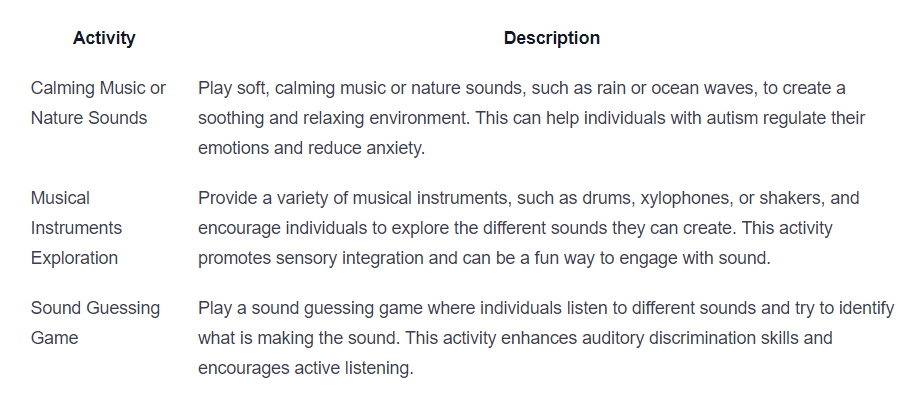
6. Visual Stimulation
Visual stimulation activities help individuals with autism engage with their sense of sight and can be both calming and stimulating. These activities involve providing visually interesting and engaging experiences to support sensory integration and visual processing skills.
Here are some visual stimulation activities for autistic individuals:
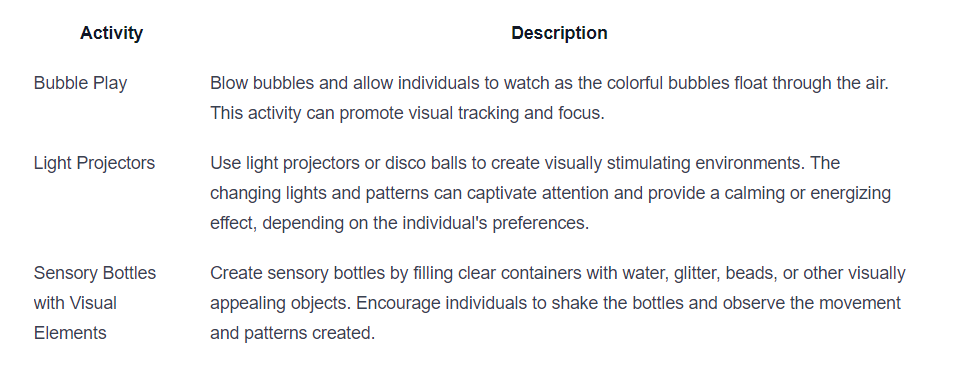
By incorporating these more engaging sensory activities into the routines of autistic individuals, you can provide them with a wide range of experiences that cater to their unique sensory needs. Always observe and respect individual sensitivities and preferences, adjusting the activities as needed.
Creative Sensory Play
Engaging in creative sensory play can be a wonderful way for autistic individuals to explore their senses and express themselves. In this section, we will explore three creative sensory activities that can provide a stimulating and enjoyable experience for individuals on the autism spectrum.
7. Sensory Art Projects
Sensory art projects encourage self-expression and allow individuals to engage their senses through various artistic mediums. These projects can include activities such as finger painting, collages, or using different textures and materials to create visual masterpieces.
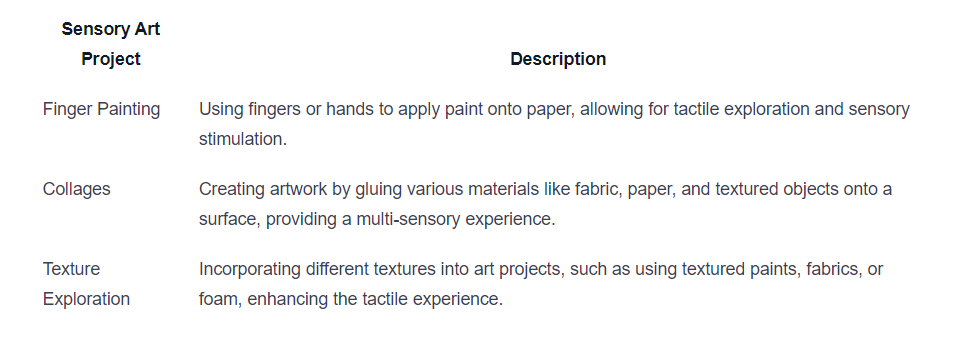
When engaging in sensory art projects, it's important to provide a variety of materials and let individuals explore at their own pace. This allows for the development of fine motor skills, creativity, and sensory integration.
8. Sensory Scavenger Hunts
Sensory scavenger hunts combine the excitement of a treasure hunt with sensory exploration. These activities encourage individuals to use their senses to locate specific items or complete specific tasks. The hunt can be tailored to target different sensory experiences, such as finding objects with certain textures, colors, or scents.

Sensory scavenger hunts not only provide a fun and engaging activity but also promote sensory exploration, observation skills, and attention to detail.
9. Sensory Playdough
Sensory playdough is a versatile and tactile activity that can offer a range of sensory experiences. It can be easily made at home using common ingredients and can be customized by adding various scents, colors, and textures.
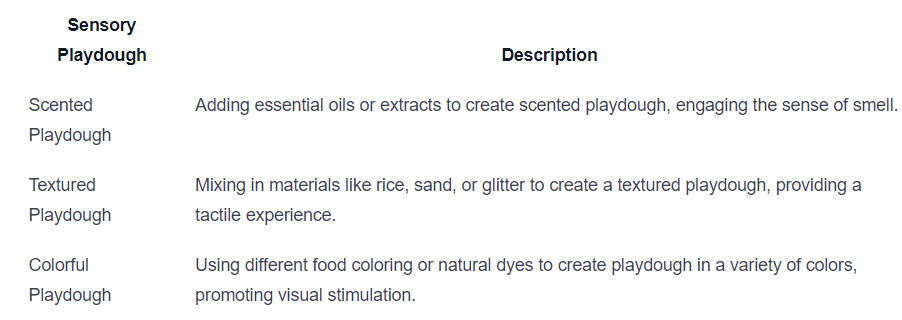
Sensory playdough offers a calming and therapeutic outlet, allowing individuals to knead, shape, and manipulate the dough, enhancing fine motor skills and sensory exploration.
By incorporating sensory art projects, sensory scavenger hunts, and sensory playdough into daily routines, caregivers and educators can encourage creativity, engagement, and sensory integration in autistic individuals. Remember to provide a supportive and safe environment, individualize activities based on sensory needs, and make sensory play a regular part of the daily schedule.
Outdoor Sensory Activities
Engaging in outdoor sensory activities can provide autistic individuals with a stimulating and enriching experience. The sensory input from nature and the environment can help promote relaxation, exploration, and overall well-being. Here are three outdoor sensory activities that can be enjoyed by autistic individuals:
10. Nature Walks
Nature walks offer a multitude of sensory experiences for autistic individuals. Exploring different outdoor environments, such as parks or nature reserves, allows them to engage with various textures, sounds, sights, and smells. The calming effect of nature and the opportunity to observe plants, animals, and natural elements can help reduce anxiety and promote a sense of peace.
During a nature walk, encourage individuals to touch different textures, listen to the sounds of birds or rustling leaves, and observe the vibrant colors of flowers or trees. Engaging in mindful activities, such as focusing on breathing or paying attention to the present moment, can further enhance the sensory experience.
11. Water Play
Water play can be a highly enjoyable and sensory-rich activity for autistic individuals. Whether it's playing in the ocean, splashing in a pool, or exploring a water table, the tactile and auditory sensations of water can provide a soothing and stimulating experience. Water play also offers opportunities for developing motor skills, coordination, and social interaction.
To enhance the sensory experience, consider providing various water toys with different textures, shapes, and colors. Encourage individuals to explore the movement and feel of water, listen to the sound it makes, and engage in interactive play with others. Always ensure safety measures are in place and supervise individuals during water play activities.
12. Gardening
Gardening is a rewarding outdoor activity that can engage multiple senses for autistic individuals. The hands-on experience of digging in the soil, planting seeds, tending to plants, and witnessing their growth can offer a sense of accomplishment and connection with nature. Gardening provides opportunities for sensory exploration, such as feeling the texture of soil, smelling flowers, and observing the colors and shapes of different plants.
Consider creating a sensory garden with a variety of plants that offer different sensory experiences, such as aromatic herbs, textured leaves, or vibrant flowers. Encourage individuals to actively participate in gardening tasks, such as watering, weeding, or harvesting. This can promote sensory integration, fine motor skills, and a deeper connection with the natural world.
Engaging in outdoor sensory activities like nature walks, water play, and gardening can provide autistic individuals with a range of sensory experiences that foster well-being, relaxation, and engagement with the environment. Remember to tailor the activities to individual preferences and sensitivities to ensure a positive and enjoyable experience.
Tips for Implementing Sensory Activities
Implementing sensory activities for autistic individuals requires creating a safe and supportive environment, individualizing activities for different sensory needs, and incorporating sensory activities into the daily routine. These tips can help maximize the benefits of sensory activities and ensure a positive experience for individuals with autism.
Creating a Safe and Supportive Environment
Creating a safe and supportive environment is essential for successful sensory activities. Here are some key considerations:
- Physical Safety: Ensure that the space is free from hazards and provide appropriate supervision to prevent accidents.
- Emotional Safety: Create a calm and non-judgmental atmosphere where individuals feel comfortable expressing themselves.
- Sensory-Friendly Environment: Minimize distractions such as excessive noise, bright lights, or overwhelming smells that may cause sensory overload.
Individualizing Activities for Different Sensory Needs
Each individual with autism has unique sensory needs and preferences. When implementing sensory activities, it's crucial to consider these individual differences. Here are some strategies to individualize activities:
- Sensory Profiles: Understand the specific sensory preferences and sensitivities of each individual through observation and communication.
- Modifications: Adjust the intensity, duration, or complexity of sensory activities based on individual sensory needs.
- Choice and Control: Offer a range of sensory activities and allow individuals to choose the ones that are most comfortable and enjoyable for them.
Incorporating Sensory Activities into Daily Routine
Incorporating sensory activities into the daily routine can help individuals with autism benefit from sensory stimulation consistently. Here are some suggestions:
- Structured Schedule: Establish a structured daily routine that includes dedicated time for sensory activities.
- Variety and Flexibility: Introduce a variety of sensory activities throughout the day to cater to different sensory needs and maintain engagement.
- Transition Strategies: Use visual schedules, timers, or social stories to support smooth transitions between activities and minimize anxiety.
By creating a safe and supportive environment, individualizing activities, and incorporating sensory activities into the daily routine, individuals with autism can experience the full benefits of sensory stimulation. These tips promote a positive and enriching sensory experience, fostering sensory integration, self-regulation, and overall well-being.
Sources
https://www.autismspeaks.org/blog/10-sensory-activities-for-autism
https://www.thefca.co.uk/fostering-autistic-children/sensory-activities-children-autism/
https://autismcenterforkids.com/autism-friendly-sensory-activities/
Similar articles
We’re here to help you

Our team is here to assist you in this process. Contact us for any assistance.
it’s easy to apply
We Accept Most Insurances
Our in-network insurance partnerships make ABA therapy more accessible to families throughout our service areas.







Our Insurance Process
We'll request your insurance details to help us verify your plan's coverage for ABA therapy. Once we've received this information, we'll walk you through your benefits, including copayments, deductibles and out-of-pocket maximums, so you know what to expect in advance.
Our team will then handle the preauthorization and all the necessary paperwork.
.svg)





















.jpeg)


































.jpeg)




.jpeg)







.jpeg)











.jpeg)
















